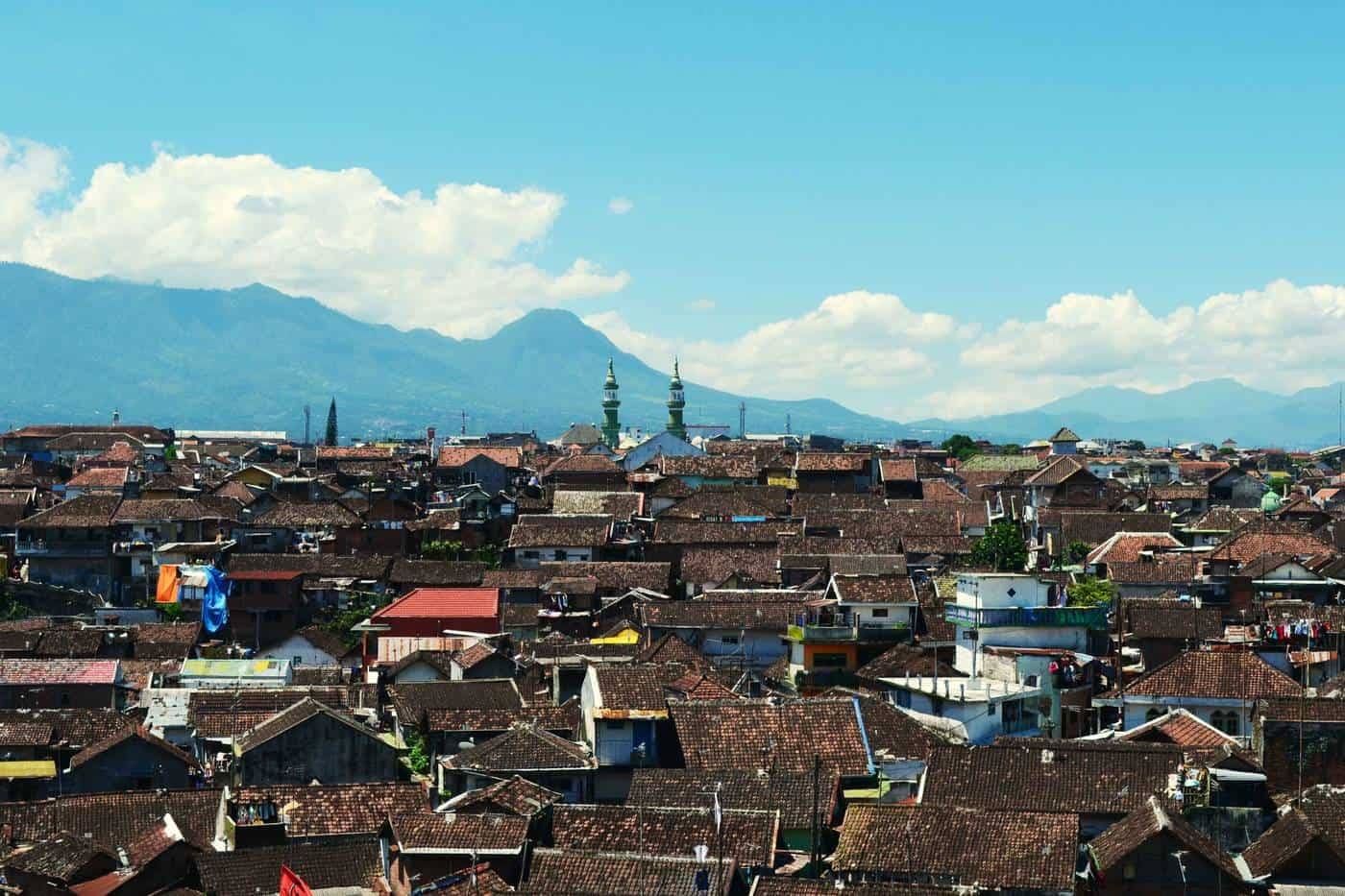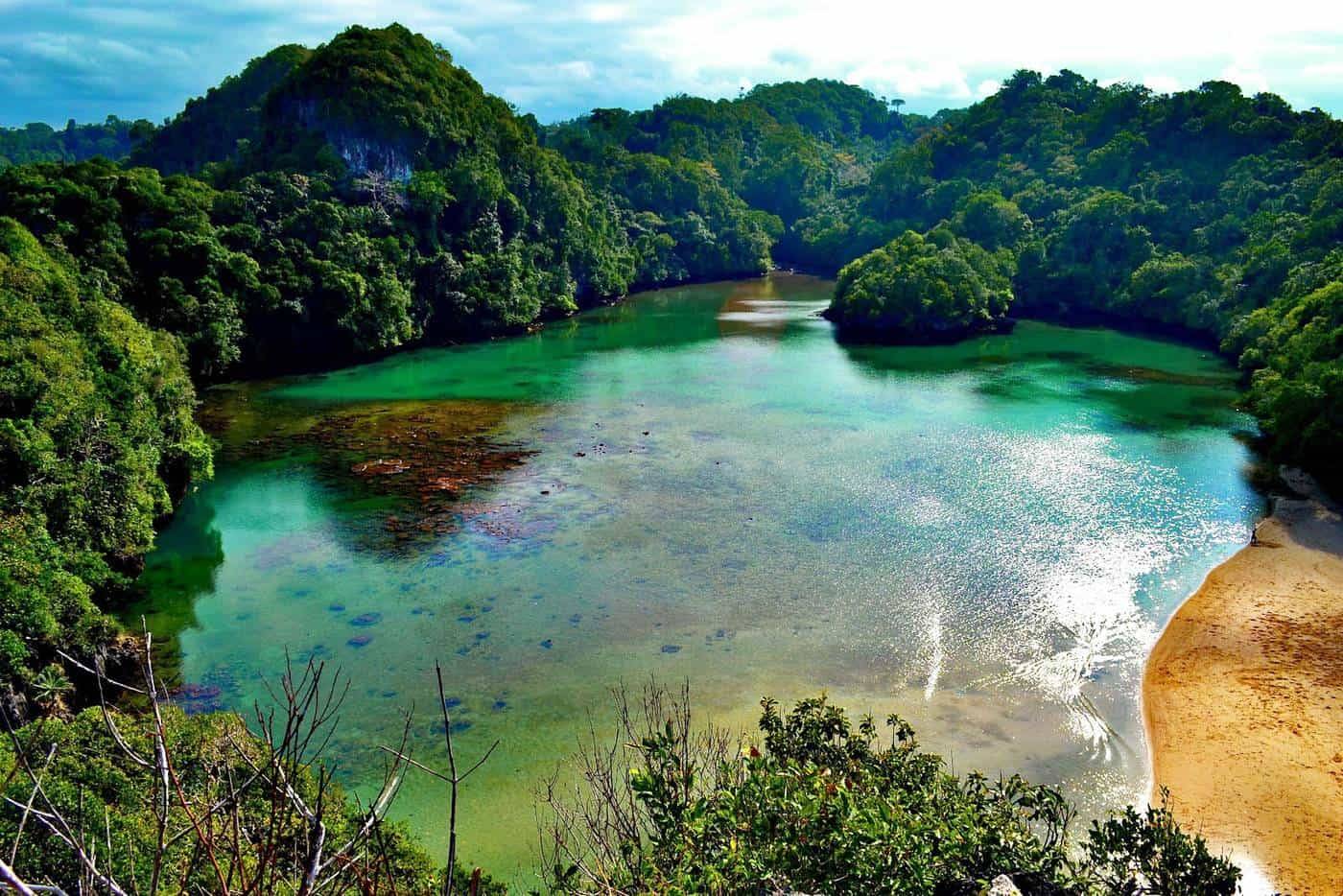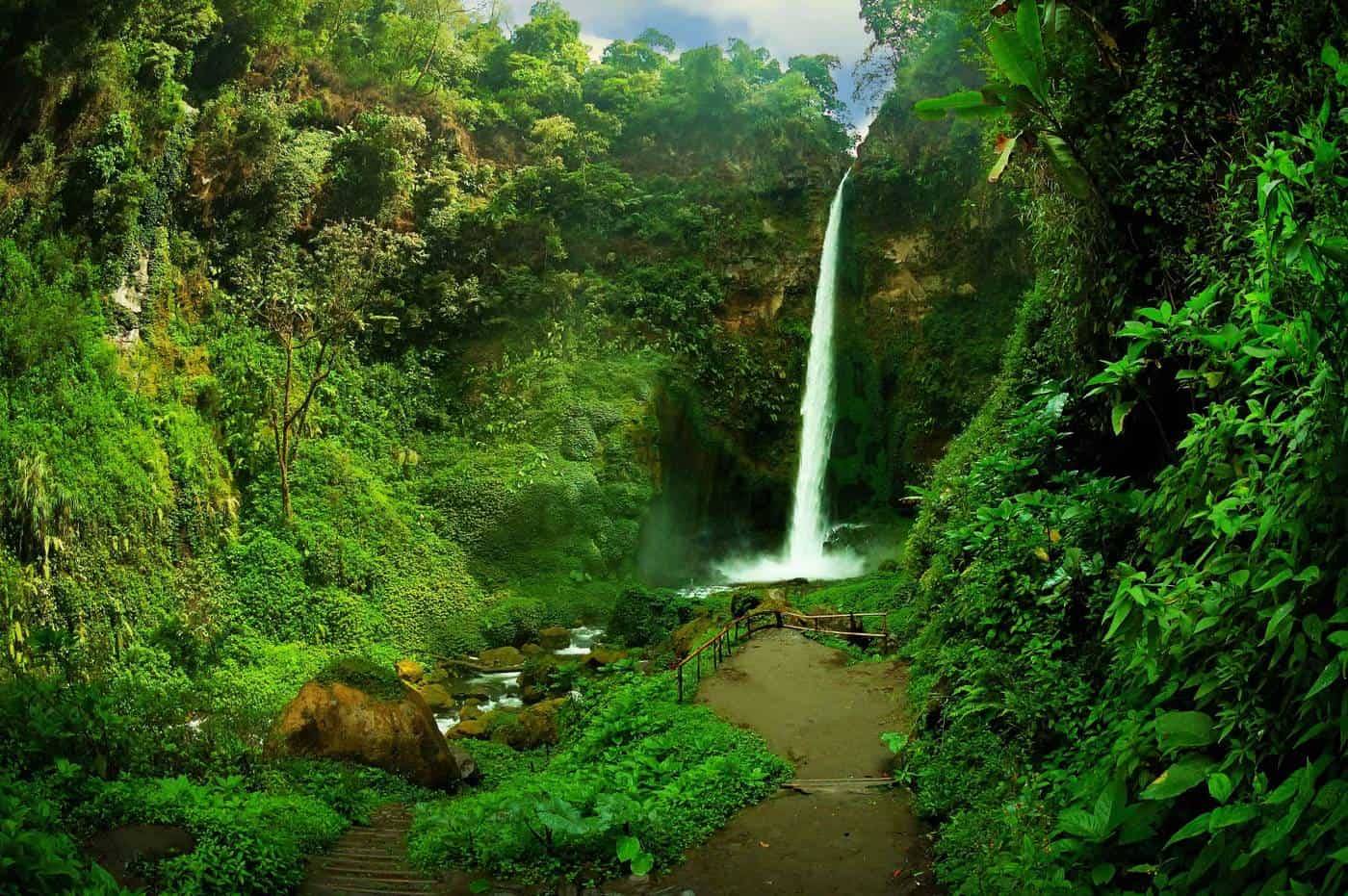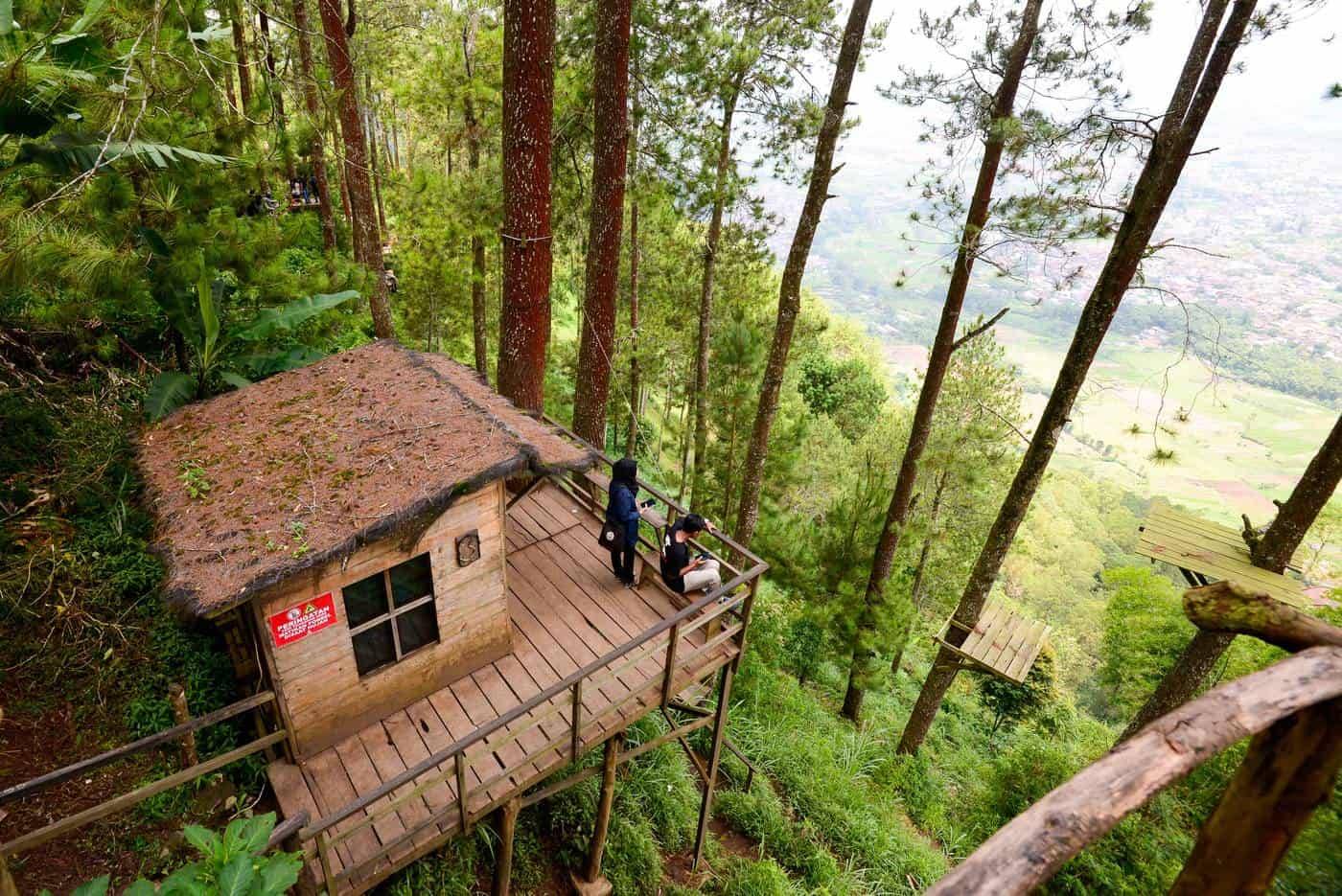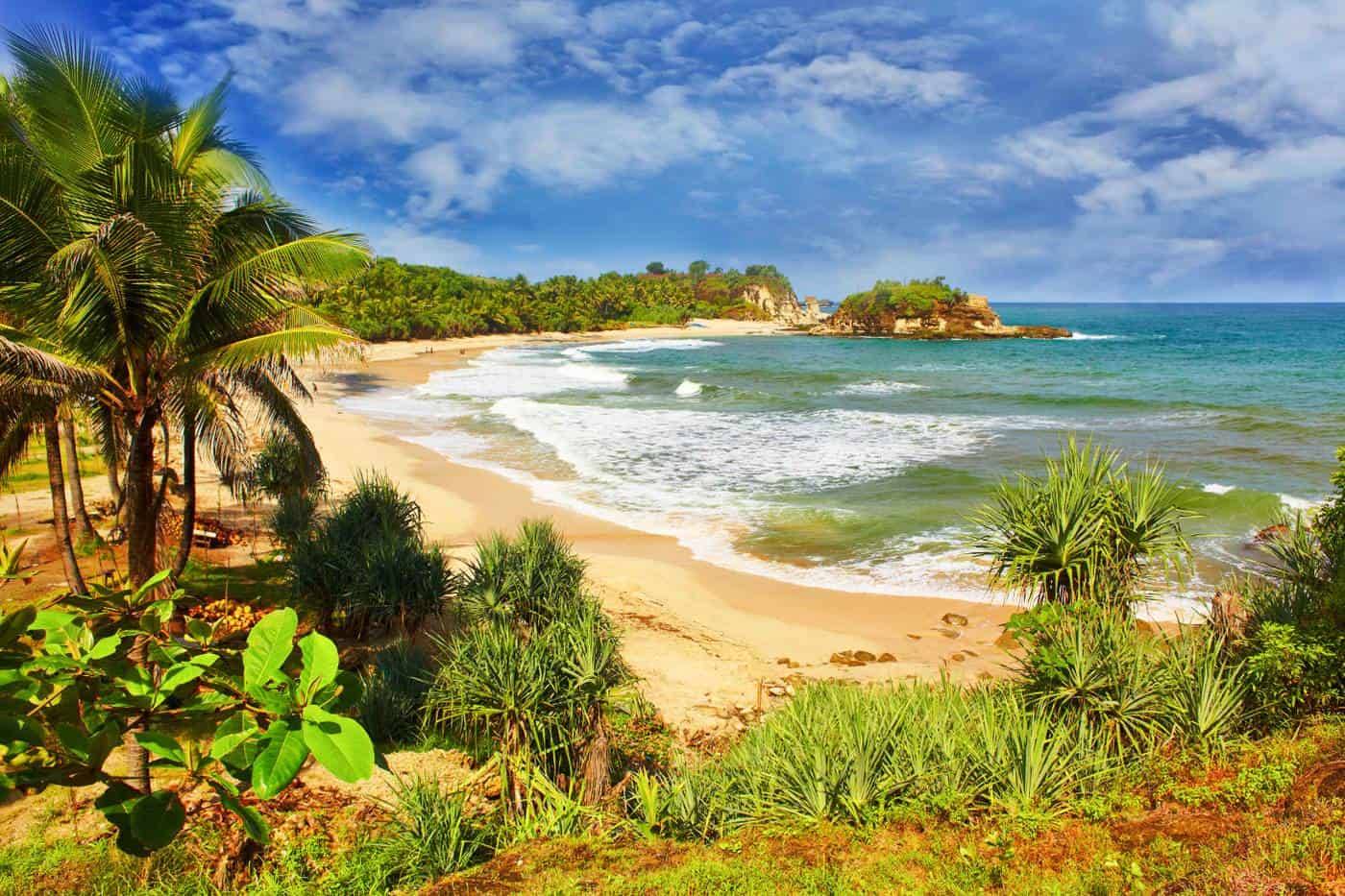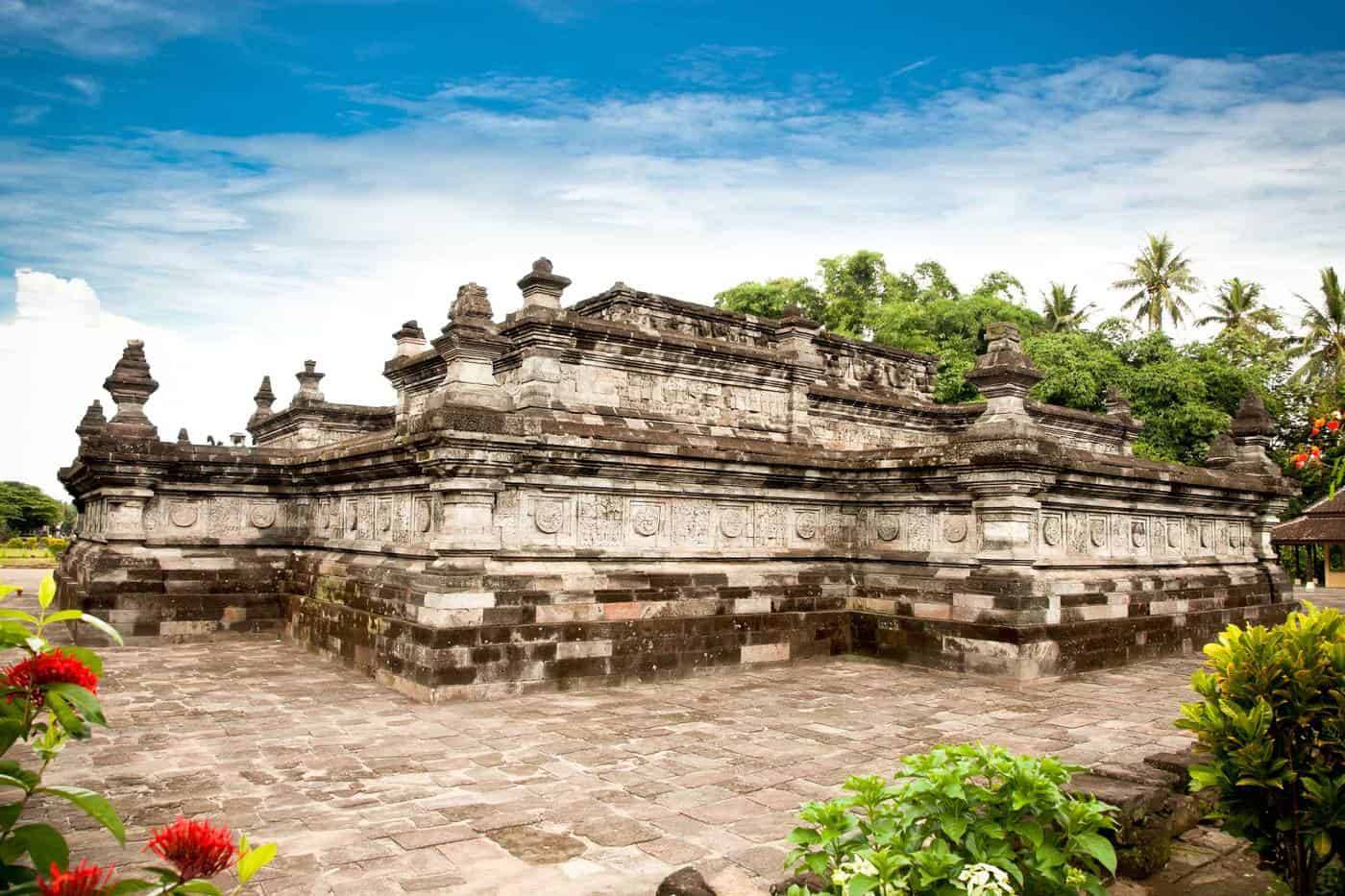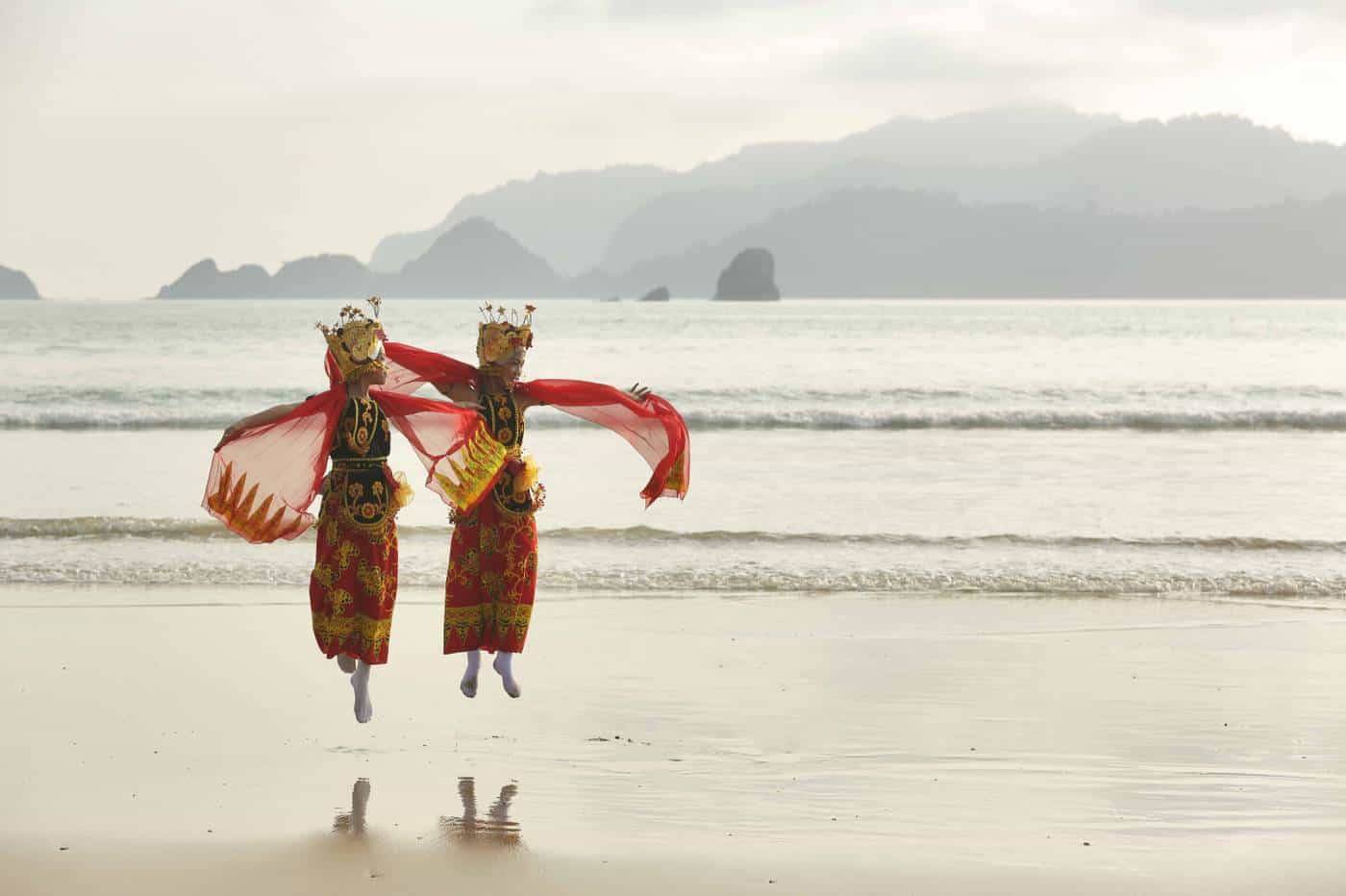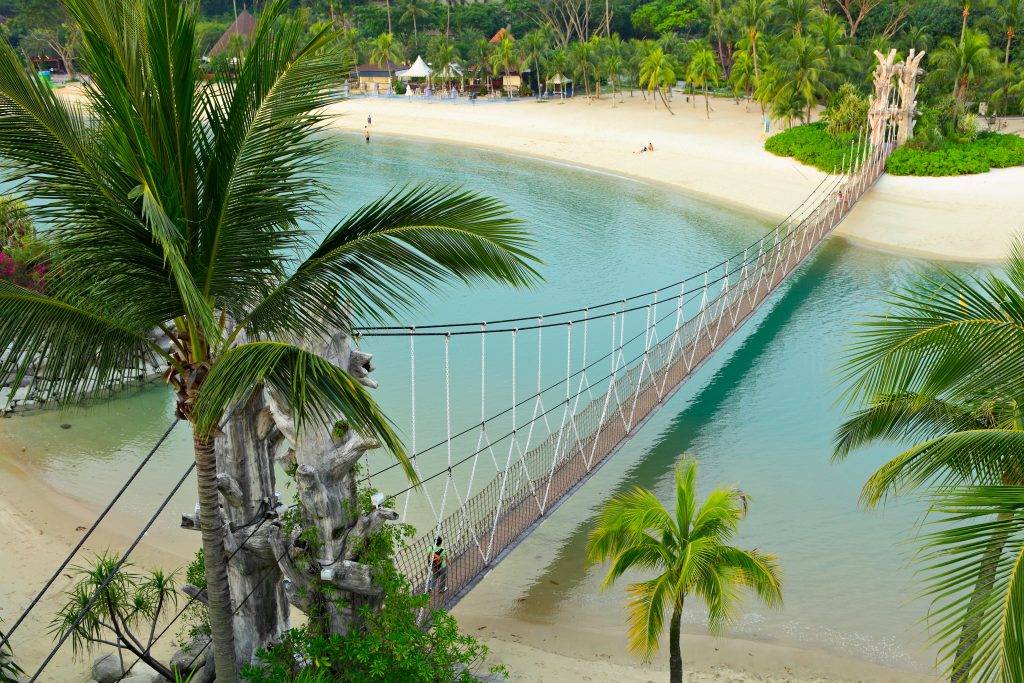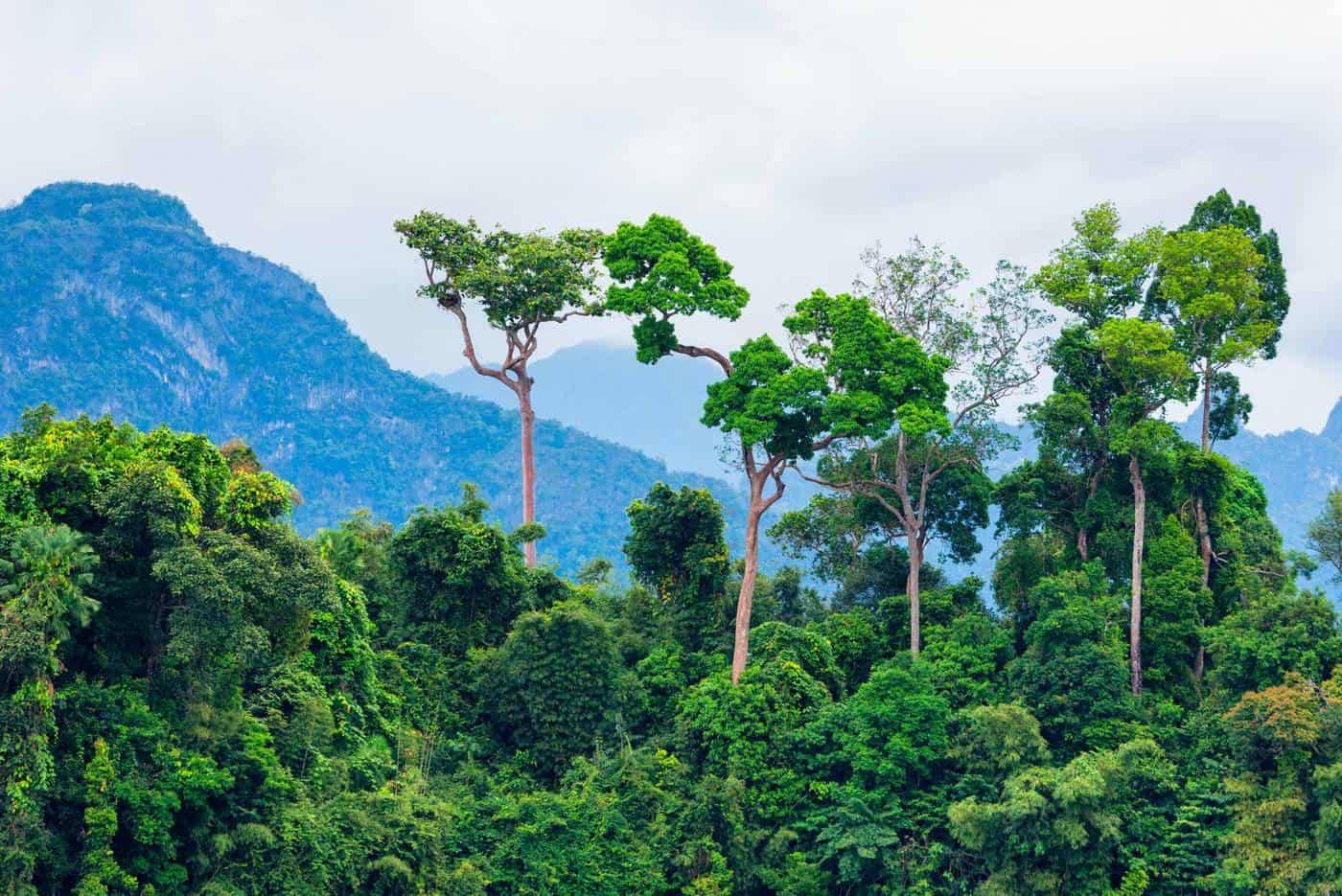
EAST JAVA – THE LAND OF VISTAS
THE CHARACTER OF EAST JAVA
The blend of the Javanese, Madurese and Tanggerese cultures in East Java resulted in very refined taste and strong charisma. The sense of style, tradition and diligence walk hand in hand in every region of East Java and their combination manifests itself in the way of living.
At the same time, the ever-present volcanic smoke, sinuously crawling above lakes and rice paddies constantly give a sign that the fiery lava domes never sleep.
SURABAYA
Polluted, noisy and crowded, Surabaya is the major city and seaport of East Java. City lovers will surely enjoy the dynamic character; there is always something happening in its busy streets and lively markets.
Although the first encounter might be overwhelming, there is much to see and do in Surabaya. While fans of history will love sightseeing in the old city, other tourists could spend days ticking Surabaya`s purpose-built attractions.
There is everything one would imagine an Indonesian city to be; modern skyscrapers and Dutch colonial architecture collide with the thriving Chinatown and Arab Quarter, and clearly, Surabaya is a place where the ancient culture meets the new trend.
ESSENTIAL EXPERIENCES IN SURABAYA
- Chinese Quarter – Jalan Slompretan & Jalan Bongkaran (the main shopping and market streets), Hok Teck Hian (300 years old temple)
- Qubah/Kampung Arab – Masjid Ample (the oldest mosque in the city), Jalan Nyanplungan, Jalan KH Mas Mansur, Jalan Sultan Iskandar Muda & Jalan Pabean Pasar are the original Arab trade areas, and this labyrinth of gorgeous lanes is filled with incredible atmosphere
- Self–Guides Old Town Walk – Gereja Kelahiran Santa Perawan Maria Church, Dutch House of Sampoerna, Jalasveva Jayamahe Monument, The Suramadu Bridge, Grahadi Governor Residence
- Markets – Loopin Graha Famili, Pasar Ampel Arab Market, G-Walk in Citra Land and the famed Turi Railway Market
- Museums – Sampoerna Museum, Museum Surabaya, Indonesian Cancer Museum
- Surabaya Town Square – shopping paradise, restaurants and cafes, Tanjungan Plaza (a popular shopping mall)
- Kenjeran Beach – known for magnificent sunsets, photography, boat tours, water sports and many other attractions
- Bonbin – the well-known Surabaya ZOO is the oldest and largest zoo in South-East Asia
- Ciputra Waterpark – a great place for swimming with wave pool, slides, and other purpose-built attractions
- Mojokerto – a nearby town and a centre of the ancient Majapahit Kingdom with several temples and tombs
- Tuban – an important pilgrimage centre for Muslims and famous Tuban Akbar Cave
MADURA ISLAND
Separated from Java by a narrow Strait of Madura, Pulau Madura is a flat and arid island with not very fertile soil – and it is hard to imagine, seeing the mainland`s lush greenery just a few kilometres away. The island can be easily reached via the Suramadu Bridge that connects the island with Surabaya.
Due to little tourist infrastructure, not many travellers visit this part of Java, but those who give it a go will be rewarded with an authentic Javanese experience.
Madura is not only famous for traditional bull racing but also the Madurese have always been outstanding sailors, and the boat display here is at its best. The Madurese sailing vessels, including golekan and leti-leti, are sort of floating art galleries.
ESSENTIAL EXPERIENCES ON MADURA ISLAND
- Sumenep Palace– palanquins, weapons, Chinese porcelain, wooden handicrafts and beautifully carved furniture and the Royal Carriage House Museum
- The Madura Hills – see the local farmers and their lifestyle, traditional crops are corn, tobacco and cloves (Pagantenan Pamekasan and Gulukguluk)
- Northern Coastline – shallow, azure waters, fishing villages (between Bangkalan and Sumenep) and royal tombs (Ratu Ibu, Asta Tinggi)
- Bull Racing – the most famous attraction in Madura and an extremely vibrant and dazzling event (August and September). This is a major event in Madura, and it is taken very seriously, dark magic and sorcery is often used
- Kangean Islands– an off the beaten path destination with very little tourist development but some of the most impressive diving and snorkelling sites in Java (public ferry runs from Kalianget/Sumenep to Arjasa/Kangean (7-9 hrs trip)
MALANG
The second largest city in East Java, Malang, is a place of a great historical and cultural significance. Once the centre of the ancient Hindu kingdoms, today a popular tourist hub and the gateway to the major attractions in the region – Batu, Bromo and the southern beaches.
Malang is said to be the most attractive city in East Java. Already during the colonial era, the Dutch saw its beauty and potential, and they quickly fell in love with Malang`s mild highland climate and relaxed atmosphere.
ESSENTIAL EXPERIENCES IN MALANG
- City Landmarks – take a self-guided walking tour through the city of Malang to discover its character and sights such as Ijen Boulevard (Jalan Ijen is the old colonial area), Malang City Square, Jami Great Mosque Malang, Tudu Bundaran Monument (if you do not fancy walking hire a pedicab – traditional local transport)
- Singosari Temple – impressive and well preserved Hindu temple dates from 1300AD, and it serves as a reminder of the great Hindu kingdoms that ruled East Java before the arrival of Islam, visit the Ken Dedes hot pools on the way back
- Markets – bird markets, flower markets, food markets, night markets
- Museums – Brawijaya Military Museum, Museum Malang Tempo Doeloe, D’Topeng Kingdom Museum, Museum Bentoel
- Mangun Dharma Art Center – spectacular performances of traditional East Javanese art, including dance, batik, shadow puppetry and carving
- Purwodadi Botanical Gardens – one of the Indonesian best botanic gardens with vast collections of Indonesian flora and lovely waterfalls
- Senaputra Park – popular water park with regular Wayang Kulit shadow puppet shows and traditional East Java dance performances
- Kampung Warna Warni – the “Rainbow Village” has gained popularity for its vibrant-painted buildings along a river (the slum area at Jodipan was transformed to educate the locals about sanitation and waste management
GREATER MALANG
Malang has a strategic location, and it is a good base for those who intend to explore the surrounding areas. There is good access to Bromo Tengger Semeru National Park, the volcanoes around Batu and the Indian Ocean coast.
Besides, there is a good connection between Malang and Surabaya. Malang township is a good place where to arrange transport, tours or hire your own vehicle/scooter for more flexibility.
WHAT TO DO AROUND MALANG
- Mount Bromo – climb the icon of East Java (magnificent views of active volcanoes and Luhur Poten Hindu Temple)
- Coban Pelangi – a short trip from Malang, the rainbow waterfall is a good idea on a steamy day
- Balekambang Beaches – further south of Malang there are three pretty beaches: Balekambang, Ngliyep and Sendang Biru. However, facing the Indian Ocean, the shores are quite rough, so they are rather good for relaxation and photography due to the stunning coastal scenery and a small island temple
- Sempu Island – a picturesque island with terrific landscapes and scenery (rolling hills, forested limestone cliffs and fabulous white sandy beaches and lagoons). Segara Anakan is the major tourist hub where beach camping is permitted (transport from Sendang Biru Beach to Sempu by a local boat)
BATU
Batu is an extension to Malang and another tourist hotspot, for being a starting point to many natural attractions. This pretty hill-town with fresh air, orchid gardens and green landscapes used to be a retreat and place to relax for the Dutch, during the colonial time, and even today, the wealthy locals have their holiday homes built in Batu.
The Batu region teems with forested mountains, clear rivers and waterfalls, charming villages and tea plantations.
The town itself is encircled by several volcanoes, including Mount Kawi, Mount Welirang, Mount Kelud, Mount Arjuna and Mount Arjuno. Batu offers outstanding tourist infrastructure and great conditions for outdoor activities and sports.
ESSENTIAL EXPERIENCES IN BATU
- Songgokerto village – its surrounds are ideal for bird spotting, hiking and the famous Rondo Waterfall, rafting available
- Punten Village – characteristic regional apple & orange orchards and orchid nurseries
- Songgoriti Village – a picturesque village with lots of walking paths and relaxing options, hot springs, pond with boat rentals, temples, water park
- Selecta – a landscaped park established by the Dutch in with nice swimming pool and small waterpark, aquarium, horse riding, walking and restaurants
- Jungle Trekking & Waterfalls – challenging trekking to the trio of waterfalls; Coban Talun, Coban Rais, Coban Putri
- Alun Alun – a theme park with plentiful attractions
- Mt Panderman (2046 m) – climb the volcano either from Pesanggrahan or the mountain pass near Kusuma Agrowisata (6 hrs return), excellent views
- Mount Arjuna & Mount Weliran – a tough 3-4 day expedition for fit hikers, local guide required (you can hire one in Selecta Village). The dormant volcano Arjuna is at 3,338 m, and the active Welirang at 3,156 m, are joined by huge saddle ridge that needs to be overcome by the climbers
- Batu Secret Zoo, Batu Night Spectacular and Eco Green Park – the most popular purpose–built attractions (good for families but usually very crowded)
- Omah Kayu – wooden tree-bungalows offer simple accommodation but breathtaking views of Batu, especially by night
THE INDO COASTLINE OF EAST JAVA
The southern shores of East Java present open Indian Ocean beaches, dramatic rock formations and spectacular vistas. There are gorgeous caves and mangroves near Pacitan, with the most impressive coastal scenery around Trenggalek.
The Indo coastline might be a bit an off-the-beaten-path for those chasing the major attractions of East Java, but the road trip from Yogyakarta to Banyuwangi is well-worth of the potholes. The National Highway crosses several important historical and natural points of interest, and if you are fond of surfing and good food, then the trip should not be skipped.
ESSENTIAL EXPERIENCES ALONG THE INDO COAST OF EAST JAVA
- Pacitan – the Klayar Beach is said to be the best beach in Java, also called the ‘Flute Beach’ for loud whistling sea as the waves crash on the rocks and make a flute sound. Also, Watu Ulo Beach is beautiful. NOTE Pacitan is dubbed as “the city of 100 caves” and home to one of the most beautiful caves in Southeast Asia – Goa Gong at Maron River (various boat tours available in the area)
- Ponorogo – a lovely hinterland area with natural attractions, including the Ngebel Lake (popular for jet-skiing & water sports), Tirta Husada Hot Springs, Pletuk Waterfall, Mount Ngliman and Banyu Tibo Beach (with a waterfall)
- Kediri – a pretty town situated on the Brantas River boasts natural beauty: Dolo Waterfall, Gunung Wilis volcano, Selomangleng Cave (man-made cave for meditation), Sumperpopdang Forest, Mount Kelud & Mount Klotok
- Tulungangung – pristine coastal areas, fantastic beaches, e.g. Pantai Popoh, Pantai Prigi, Pantai Coro, Pantai Gemah, Pantai Putih Trenggalek and Pantai Kedung Tumpang
- Blitar – the birthplace of the first Indonesian president Soekarno and important heritage site, e.g. Candi Penataran Temple
TRAVEL TIPS
Bromo Tengger Semeru National Park is just a stone`s throw away hence make sure you don`t miss out on one of the iconic images of entire Indonesia.
Banyuwangi is also recommended to explore. The famous Diamond Triangle includes some of the top attraction in Java – Kawah Ijen, Baluran, Meru Betiri and Alas Purvo – and offers a magnificent journey through impressive volcano craters, the last habitat of the Javan Tiger, the real ‘Indonesian Safari’ and the world-class surfing locations. Especially, if heading to Bali, it is a good idea to travel overland, via Banyuwangi, instead of flying.
WHEN TO TRAVEL
The dry season in Java generally runs from May till October with peak tourist season in July and August (try to avoid these months as the prices go up and most of the places are overcrowded).
Good time to visit Java seems May-June and Sep-Oct. However, rain can occur at any time in this part of the world. Also, weekends and local public and school holidays will be very busy.
HOW TO GET THERE
Fly to Surabaya or Malang (via Jakarta/Java or Denpasar/Bali).
For all international flights visit www.momondo.com or www.skyscanner.com
For all domestic Indonesian flights check out www.garuda-indonesia.com







